#pitchclasssetsoloingideas
Text
Harmonic and Melodic Equivalence V19C
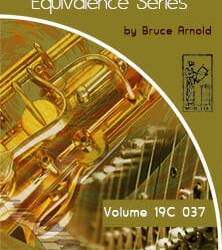
Harmonic and Melodic Equivalence V19C
Get this book for one dollar by using promo code:
buckbook
Harmonic and Melodic Equivalence V19C
Add digital copy to cart - $19.99
Status: In stock, Digital book is available for immediate access.
Melodic Rotations Learning to Improvise More Based on the Composition
"Harmonic and Melodic Equivalence" is a series of books that will help you to develop many different musical skills simultaneously. The source materials for these books are exercises that contain two 3 note groupings, also called "trichords," that are manipulated in various ways. These exercises use many different types of harmonic and melodic ideas that can be superimposed over common chord progressions, scales and other musical situations. The exercises found in these courses are also great for singing and rhythm studies. Finally, the "Harmonic and Melodic Equivalence" course concentrates on the use of the three note pitch class sets (trichords) by pairing each trichord with another trichord with the same prime form. For instance, in this volume C, Eb, G and D, F, A are both 037 pitch class sets because they both contain a minor third and a 5th within their interval structure. This is a great sequence because it uses six notes that are find in any of the major modes therefore you will find a ton of useful applications which are discussed in the course.
Harmonic and Melodic Equivalence Exercises
This course is divided up into two sets of exercises written in treble and bass clef. The 1st set of exercises gets gradually harder but also more musical. Depending upon your musical skills you can start anywhere you want but for beginners I would recommend starting from the 1st exercise of the five. The 2nd set of exercises are called "Atomic Scales." These exercises are a technical exercise that really helps you to learn these ideas but also sound great as a melody right off the bat. There are 6 different types of "Atomic Scales" exercises in this course. You don't have to play every exercise in every key. But doing this will greatly increase the likelihood of you using it in real music in the future. Below is a listing of the exercises found in this course:
Closed position studies.
1st inversion studies.
2nd inversion studies.
Random combinations of closed position along with 1st and 2nd inversion.
Random combinations of closed position along with 1st and 2nd inversion with rhythmic displacement.
Atomic Scales Exercise 1
Atomic Scales Exercise 2
Atomic Scales Exercise 3
Atomic Scales Exercise 4
Atomic Scales Exercise 5
Atomic Scales Exercise 6
Explanation of 2nd Set of Exercises in Harmonic and Melodic Equivalence V19C Course
Below is an explanation for each set of the 6 different atomic scale exercises found in this course. Three octave sequences that move back and forth between the two 3 note groups are presented in six different configurations. These exercises are highly melodic and can be used verbatim as melodies when soloing. If we thought of the three notes as A,B,C then there would be six different ways to combine these notes. i.e. ABC, ACB, BAC, BCA, CAB and CBA. All exercises include MP3s as well as midi files so that you can hear and play these exercises at any tempo as well as versions in all 12 keys.
Three octave sequences that move back and forth between the two 3 note groups in the ABC sequence
Three octave sequences that move back and forth between the two 3 note groups in the ACB sequence
Three octave sequences that move back and forth between the two 3 note groups in the BAC sequence
Three octave sequences that move back and forth between the two 3 note groups in the BCA sequence
Three octave sequences that move back and forth between the two 3 note groups in the CAB sequence
Three octave sequences that move back and forth between the two 3 note groups in the CBA sequence
1st Set of Exercises in Harmonic and Melodic Equivalence V19C Course
Here are a few examples from the 1st set of exercises. A complete list of the different types of exercises can also be found below.
Closed Position Exercise
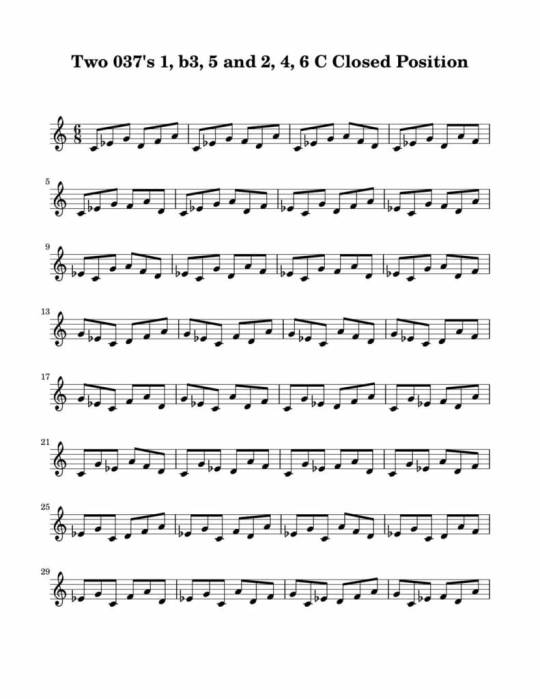
MP3 example
https://s3.amazonaws.com/media.muse-eek.com/mp3/HandME19C/01_037_Degree_1_b3_5_2_4_6_Closed_Position_Key_C.mp3
1st Inversion Exercise
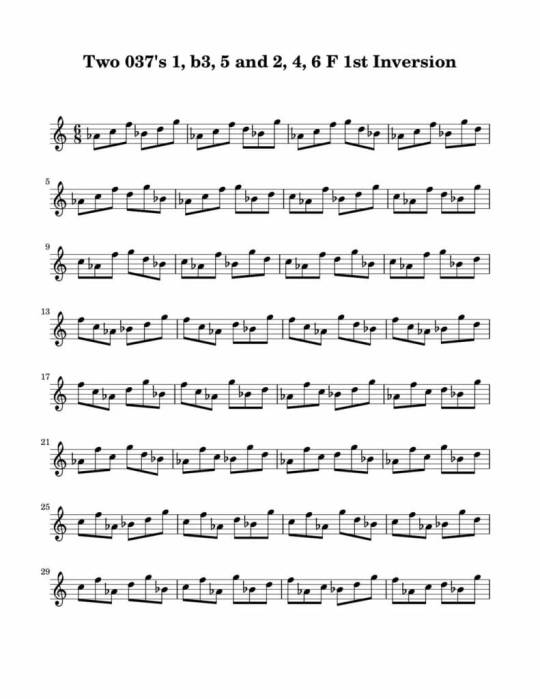
MP3 example
https://s3.amazonaws.com/media.muse-eek.com/mp3/HandME19C/02_037_Degree_1_b3_5_2_4_6_1st_Inversion_Key_F.mp3
2nd Inversion Exercise
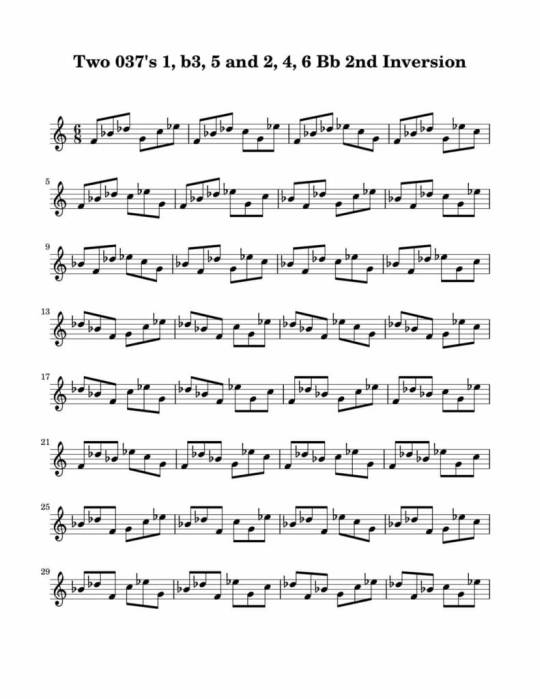
MP3 example
https://s3.amazonaws.com/media.muse-eek.com/mp3/HandME19C/03_037_Degree_1_b3_5_2_4_6_2nd_Inversion_Key_Bb.mp3
Random combinations of closed position along with 1st and 2nd inversion.

MP3 example
https://s3.amazonaws.com/media.muse-eek.com/mp3/HandME19C/04_037_Degree_1_b3_5_2_4_6_Random_Inversions_Key_Eb.mp3
Random combinations of closed position along with 1st and 2nd inversion and rhythm permutation

MP3 example
https://s3.amazonaws.com/media.muse-eek.com/mp3/HandME19C/05_037_Degree_1_3_5_2_b5_6_Random_Inv_Rhy_Key_Ab.mp3
2nd Set of Exercises in Harmonic and Melodic Equivalence V19C Course
Here are a few examples from the 2nd set of exercises.
Atomic Scales 1st Rotation
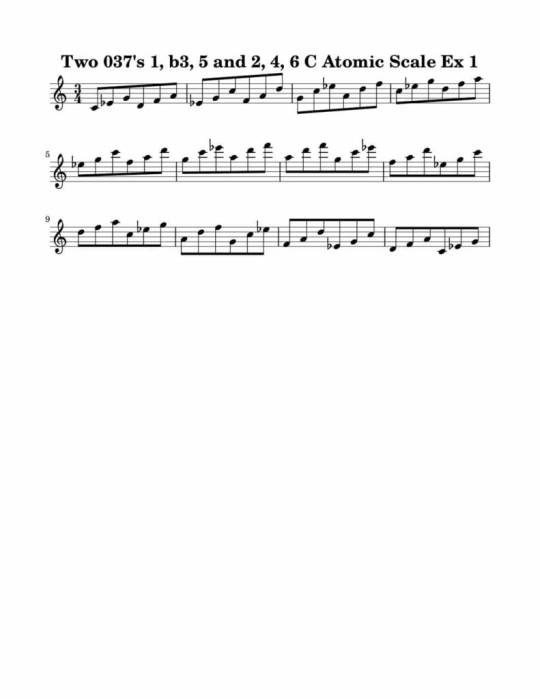
MP3 example
https://s3.amazonaws.com/media.muse-eek.com/mp3/HandME19C/01_037_Degree_1_b3_5_2_4_6_Atomic_Scale_Ex_1_Key_C.mp3
Atomic Scales 2nd Rotation
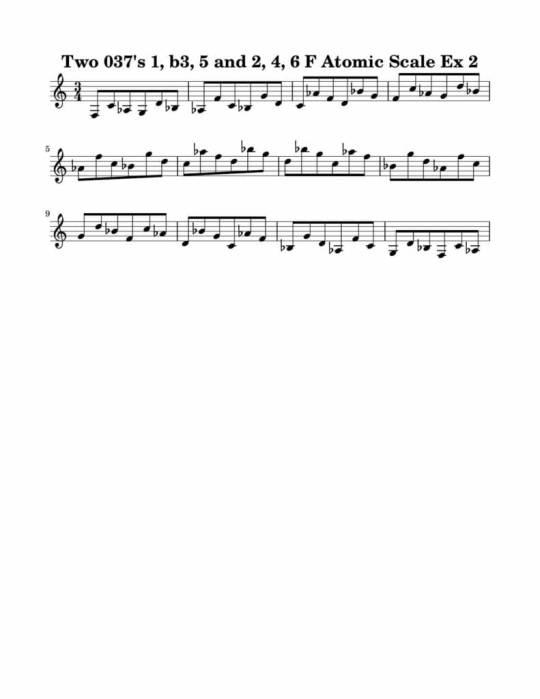
MP3 example
https://s3.amazonaws.com/media.muse-eek.com/mp3/HandME19C/02_037_Degree_1_b3_5_2_4_6_Atomic_Scale_Ex_2_Key_F.mp3
Atomic Scales 3rd Rotation
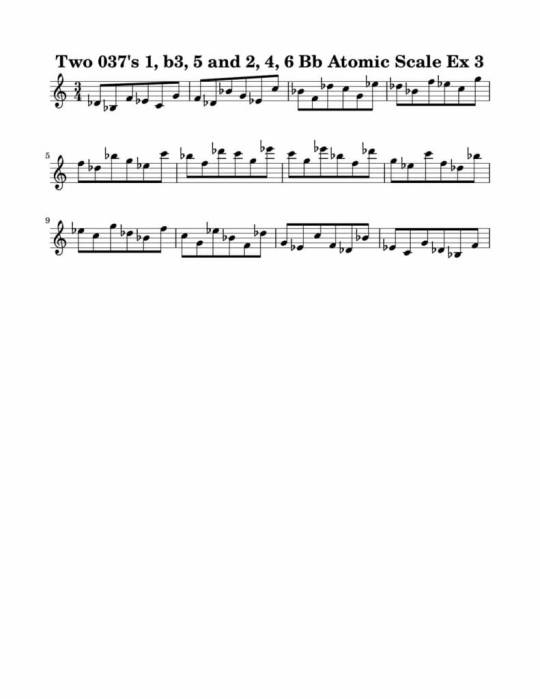
MP3 example
https://s3.amazonaws.com/media.muse-eek.com/mp3/HandME19C/03_037_Degree_1_b3_5_2_4_6_Atomic_Scale_Ex_3_Key_Bb.mp3
Atomic Scales 4th Rotation
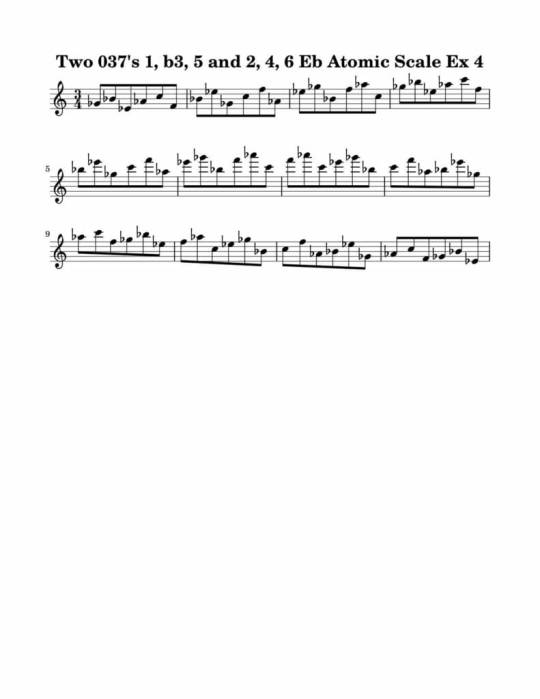
MP3 example
https://s3.amazonaws.com/media.muse-eek.com/mp3/HandME19C/04_037_Degree_1_b3_5_2_4_6_Atomic_Scale_Ex_4_Key_Eb.mp3
Atomic Scales 5th Rotation
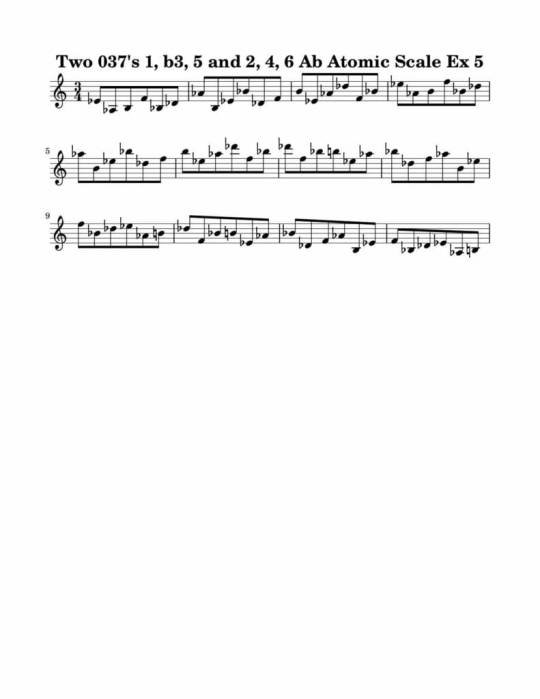
MP3 example
https://s3.amazonaws.com/media.muse-eek.com/mp3/HandME19C/05_037_Degree_1_b3_5_2_4_6_Atomic_Scale_Ex_5_Key_Ab.mp3
Atomic Scales 6th Rotation

MP3 example
https://s3.amazonaws.com/media.muse-eek.com/mp3/HandME19C/06_037_Degree_1_b3_5_2_4_6_Atomic_Scale_Ex_6_Key_Db.mp3
TOC in the Harmonic and Melodic Equivalence V19C Course:
How to Use This Course
Harmonic/Melodic Possibilities of Two 037s
Chord Possibilities of Two 037s
Rotations Starting on Every Eighth Note
Two 037's in Modal Playing
How to Think of the 037s used in this course
037 Daily Exercise-Atomic Scales
Thinking of the Trichords as Modes
Thinking of the Trichords as One Scale
C, Eb, G and D, F, A as One Scale in All Keys
Additional Practice Ideas
Get Harmonic and Melodic Equivalence V19C Today!
Add digital copy to cart - $19.99
Status: In stock, Digital book is available for immediate access.
Additional Information for Harmonic and Melodic Equivalence V19C:
Digital Edition 978-1-59489-339-1
One 11 page PDF explaining exercises, 5 different types of exercises, 328 pages of exercises in PDF format in treble and bass clef
MP3's and Midi files for all exercises.
12 MP3s from Tuba MetroDrone®
What people are saying:
Hey Muse Eek, thanks for including my steady stream of comments on this series. I find the "19" series to be the most helpful in my develop of this idea. Very easy to hear and of course many of these triad pairs show up in common scales that I use so that makes using them easy. J. Ogland
Just wanted to reach out and tell you how much I appreciate you making these books available. I mostly use them for ear training to build my key retention. As you pointed out the Key Retention Builder book is great for building key retention but also singing these exercises shows that different types of melodies create their own set of issues. H. Darwin
Hey Guys really digging this new two minor triad course! Gives me a whole new way to use simple triads to create a very unique and useful sound. A. Gary
Hey Bruce thanks for recommending the singing of these exercises to improve key retention. I'm finding that about half of the 12 keys are totally kicking by behind. I'm really starting to hear that certain melodic combinations pull my ear out of a key center and this is making me very aware of a weak point in my aural skills B. Bolton
Read the full article
#DoubleMambo#improvisation#pitchclassset#12tone#rotations#CharlieBanacos#pitchclasssetsoloingideas#HarmonicandMelodicEquivalenceV19C
0 notes